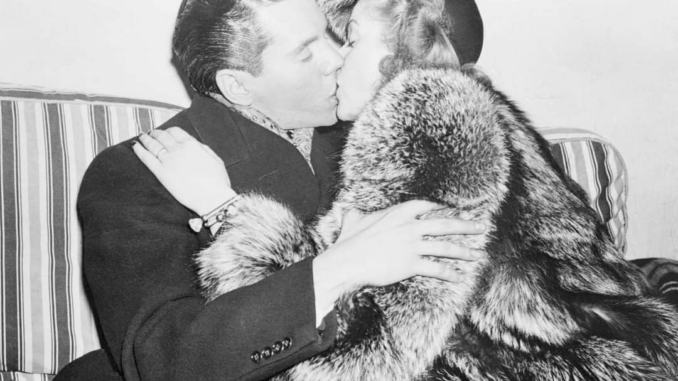
In 1951, I Love Lucy premiered and quickly became more than just a sitcom—it became a cultural phenomenon that not only reflected but also influenced the social fabric of the 1950s. With Lucille Ball and Desi Arnaz at the helm, the show captured the essence of post-war America, mirroring the lifestyle, values, and challenges of an era. But how did a 30-minute sitcom manage to embody an entire decade’s culture? Dive in as we explore how I Love Lucy influenced and reflected the culture of the 1950s, from societal norms to fashion, relationships, and everything in between.
The Backdrop of the 1950s: America’s Post-War Boom
1. The Economic Prosperity of Post-War America
The 1950s brought economic growth, and middle-class Americans enjoyed new luxuries, from cars to home appliances. I Love Lucy showcased these with scenes featuring new refrigerators and washing machines, symbolizing the comforts of middle-class life.
2. Emphasis on Family and Domesticity
The show revolved around the Ricardos, a nuclear family setup that embodied the era’s emphasis on family values and domesticity. With Ricky as the breadwinner and Lucy as the homemaker, the show reinforced traditional family structures, reflecting the gender roles of the time.
Gender Roles in the 1950s and How ‘I Love Lucy’ Portrayed Them
3. The Archetype of the 1950s Housewife
Lucy Ricardo’s character encapsulated the 1950s housewife—often confined to the home, focused on her husband’s needs, and eager to fit into a socially acceptable mold. But Lucy’s character didn’t always play by the rules, which made her a relatable and rebellious figure for many women.
4. Lucy’s Desire for Independence
Although a homemaker, Lucy often resisted the typical 1950s expectations. Her schemes to break into show business or prove herself outside domestic confines symbolized the simmering desire for independence among women, mirroring the early rumblings of the women’s liberation movement.
5. Comedy as a Reflection of Gender Stereotypes
The humor in I Love Lucy often highlighted the tension between Lucy’s ambitions and Ricky’s traditional values. Episodes involving Lucy’s antics usually played on themes of gender stereotypes, underscoring the era’s sometimes conflicting expectations.
Fashion and Beauty in ‘I Love Lucy’
6. The Allure of the “All-American” Look
Lucy’s iconic red lips, curled hair, and stylish dresses became synonymous with the 1950s beauty standards. The polished, feminine style showcased on the show became a visual representation of the “ideal” woman of the time.
7. The Power of TV in Shaping Fashion Trends
I Love Lucy helped popularize several fashion trends of the 1950s. From Lucy’s aprons to her casual daywear, the show’s wardrobe choices mirrored what the average American woman aspired to wear, further reinforcing certain beauty standards.
Television’s Influence and Rise in Popularity
8. The Television Boom of the 1950s
By 1955, nearly half of American households owned a television. I Love Lucy took advantage of this boom, reaching an unprecedented number of viewers and setting new standards for TV production.
9. The Appeal of Escapist Entertainment
At a time when people wanted to escape from everyday worries, I Love Lucy provided comic relief and light-hearted escapism. This comfort television served as a balm for post-war anxieties, creating a shared cultural experience across American homes.
10. Lucille Ball: A Female Pioneer in Television
Ball not only starred in but also co-produced I Love Lucy, breaking boundaries as a female entertainer and entrepreneur. Her success challenged the male-dominated entertainment industry, making her a trailblazer for women in Hollywood.
Marriage and Relationships on ‘I Love Lucy’
11. The Ricardos’ Marriage as a Reflection of 1950s Marital Dynamics
Ricky and Lucy’s marriage portrayed a mix of traditional roles and modern dynamics. Ricky was the dominant head of the household, but Lucy often found ways to exert her influence, mirroring how real-life couples navigated similar dynamics.
12. Friendship and Community as Vital 1950s Values
The show also depicted the close friendship between Lucy and her neighbor Ethel, underscoring the 1950s emphasis on neighborly bonds and community support, which were crucial social pillars at the time.
The Role of Comedy in ‘I Love Lucy’
13. Physical Comedy as a Universal Language
Lucille Ball’s slapstick humor and physical comedy broke language barriers, making the show globally popular. Lucy’s exaggerated expressions and body language created memorable scenes that showcased the universal nature of comedy.
14. Commentary on Social Issues through Humor
Behind the humor, the show subtly tackled social issues, like the pressure to conform or the desire for self-expression. Lucy’s humorous schemes were often her way of rebelling against these societal expectations.
Legacy of ‘I Love Lucy’ in Modern Culture
15. Why ‘I Love Lucy’ Still Resonates with Modern Audiences
Decades later, I Love Lucy remains iconic because of its relatable humor and timeless portrayal of human nature. The themes of friendship, ambition, and relationship challenges continue to resonate with viewers, cementing its place as a cultural cornerstone.
Conclusion: The Show that Defined an Era
I Love Lucy wasn’t just a TV show—it was a mirror reflecting 1950s America’s hopes, dreams, and contradictions. Through comedy, it tackled themes that would later become cultural and social turning points. The show’s humor, characters, and storyline give us a window into a decade marked by prosperity, conformity, and the beginnings of social change. While I Love Lucy embodies the 1950s, its legacy remains relevant as it reminds us of the timelessness of love, laughter, and the human experience.
